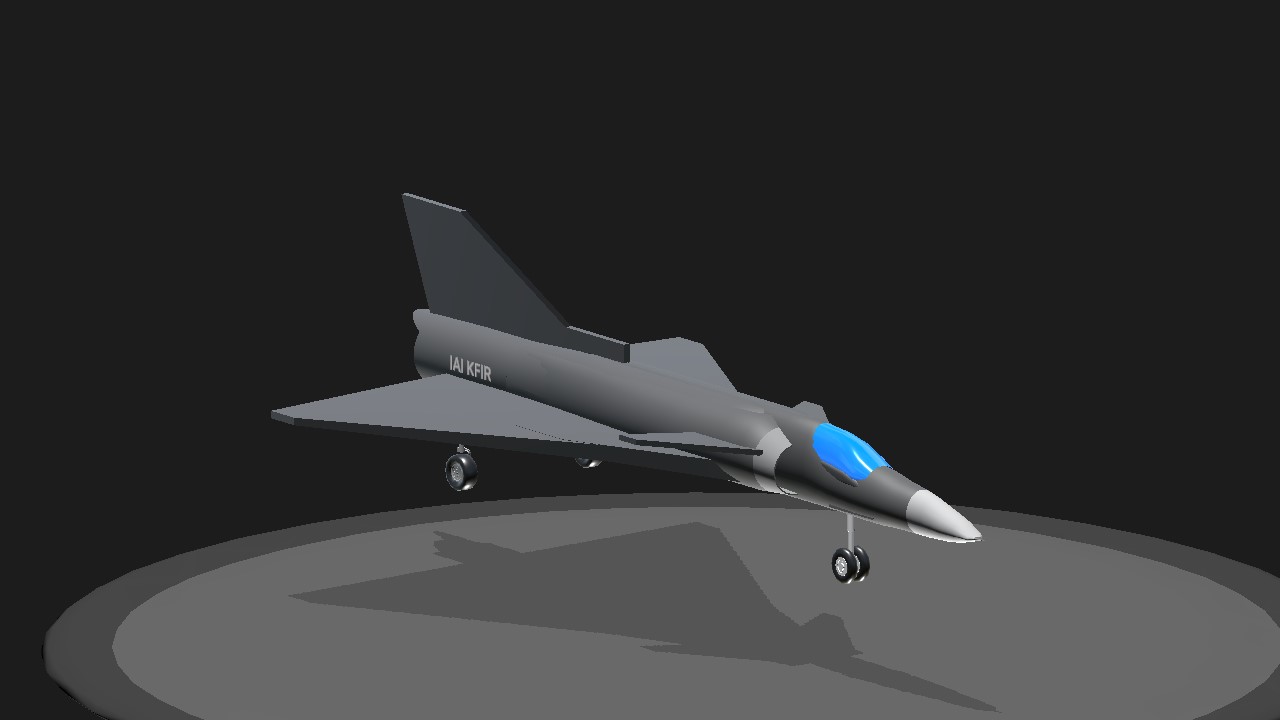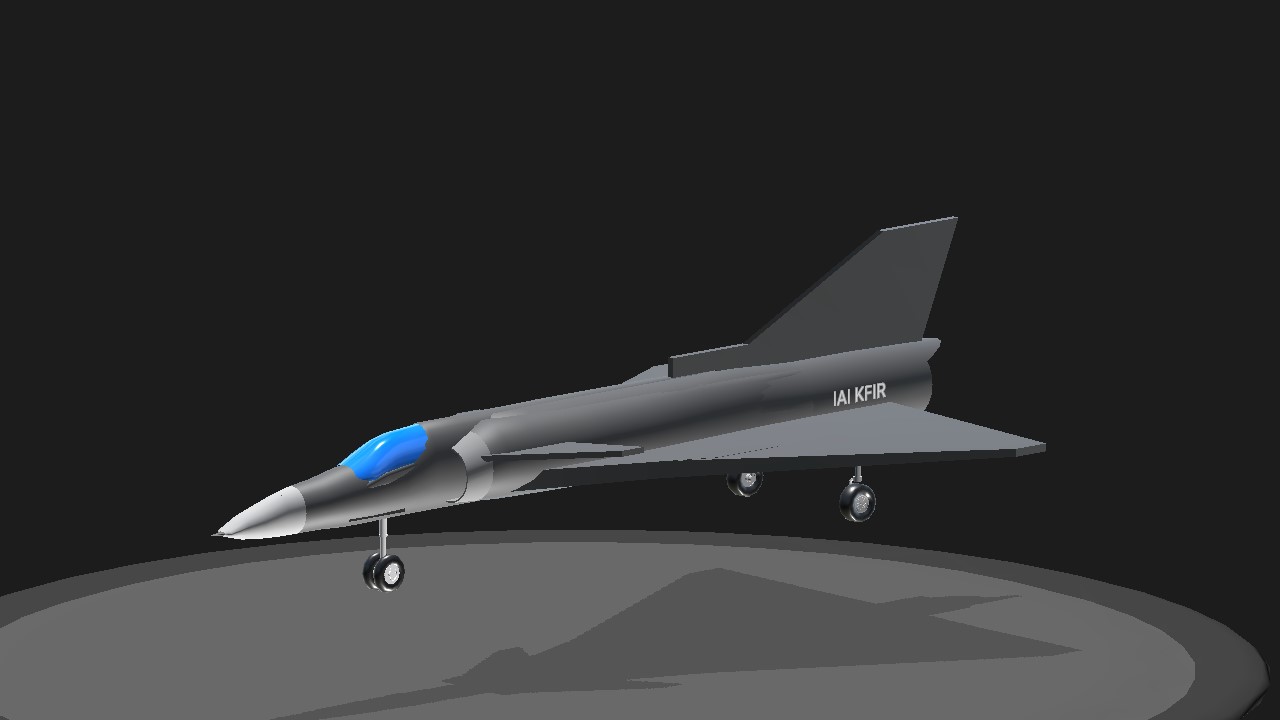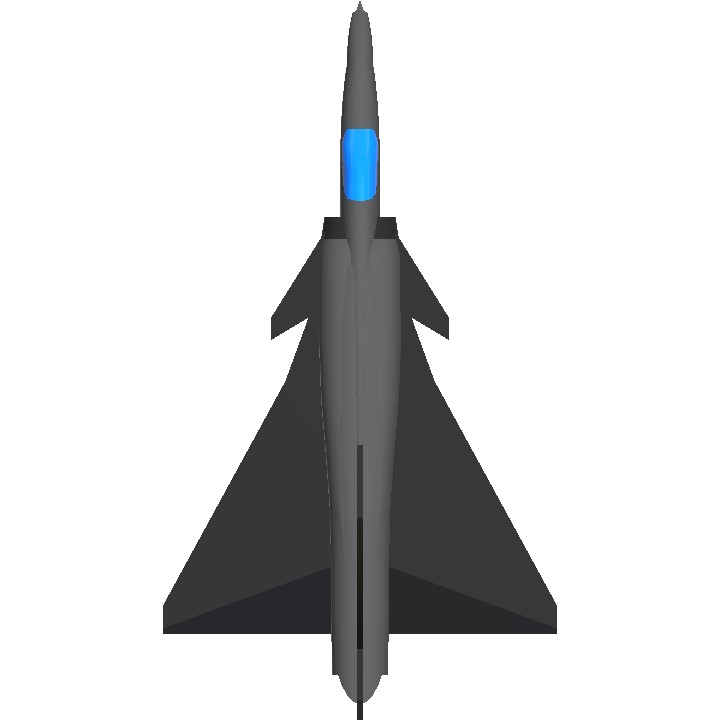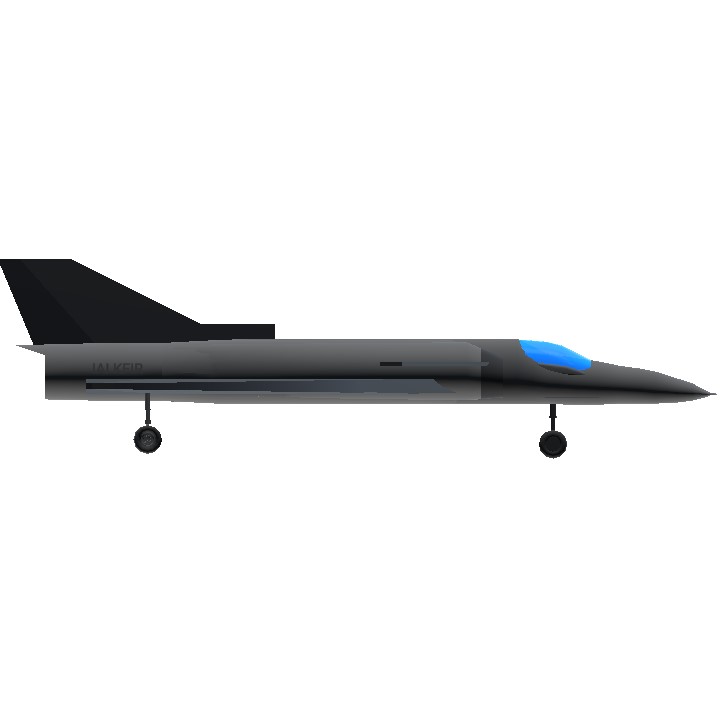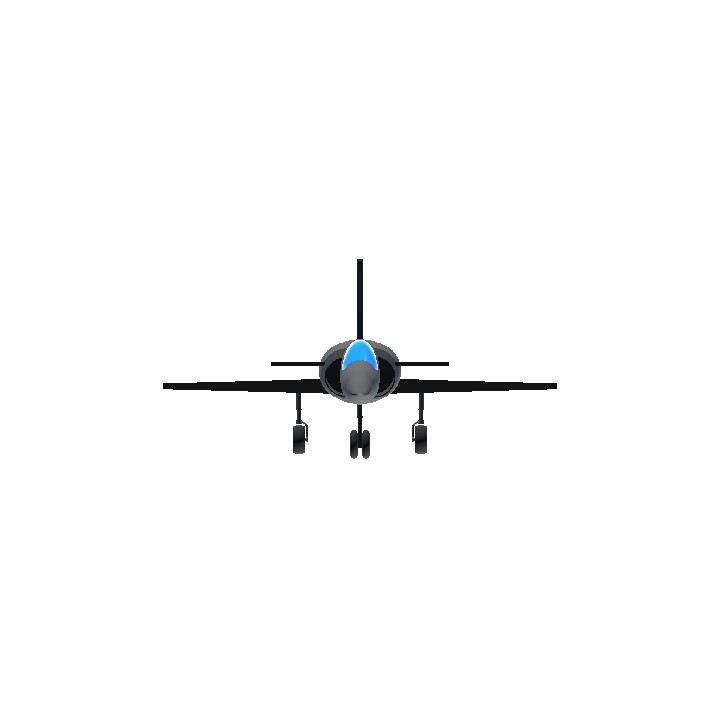introduction
The Israel Aircraft Industries Kfir (Hebrew: ???????, "Lion Cub") is an Israeli all-weather multirole combat aircraft based on the French Dassault Mirage 5, with Israeli avionics and an Israeli-built version of the General Electric J79 turbojet engine
operational history
The Kfir entered service with the IAF in 1975, the first units being assigned to the 101st "First Fighter" Squadron. Over the following years, several other squadrons were also equipped with the new aircraft. The role of the Kfir as the IAF's primary air superiority asset was short-lived, as the first F-15 Eagle fighters from the United States were delivered to Israel in 1976.
The Kfir's first recorded combat action took place on November 9, 1977, during an Israeli air strike on a training camp at Tel Azia, in Lebanon. The only air victory claimed by a Kfir during its service with the IAF occurred on June 27, 1979, when a Kfir C.2 shot down a Syrian MiG-21.[5]
By the time of the Israeli invasion of southern Lebanon in 1982 (Operation Peace for Galilee) the IAF was able to use both its F-15s and F-16s for air superiority roles, leaving the Kfirs to carry out unescorted strike missions. Shortly afterwards, all IAF C.2s began to be upgraded to the C.7 version, with enhanced weight performance, making the Kfir more suitable to its new fighter-bomber role. During the second half of the 1990s, the Kfirs were withdrawn from active duty in the IAF, after almost twenty years of continuous service.
Israel Aerospace Industries announced in August 2013 it will offer pre-owned Kfir fighter jets to foreign customers, with a 40-year guarantee. Unit price is reported to be $20 million. A few Eastern European and Latin American countries have expressed interest, Israel's Globes business daily reported.[6] By October 2013, Israel Aerospace Industries was in "very advanced negotiations" with at least two air forces interested in the Kfir Block 60. An aircraft can be delivered within one year, with two squadrons to be sold in two to three years. The Block 60 is offered with the Elta EL/M-2032 with open architecture avionics to allow a customer to install other systems. The sensor provides an all-aspect, look-down/shoot-down performance in air-to-air and air-to-ground missions, with the capability to simultaneously track up to 64 targets. The J79 has been overhauled to zero flight hours, and would need replacement after 1,600 hours.
Foreign service
Since the J79 turbojet engine is an U.S. design, although manufactured under license in Israel, all export sales of the Kfir are subject to prior approval being granted by the U.S. State Department, a fact that has limited the sale of the Kfir to foreign nations.
As of 2006, the IAI Kfir has been exported to Colombia (my country), Ecuador, and Sri Lanka.
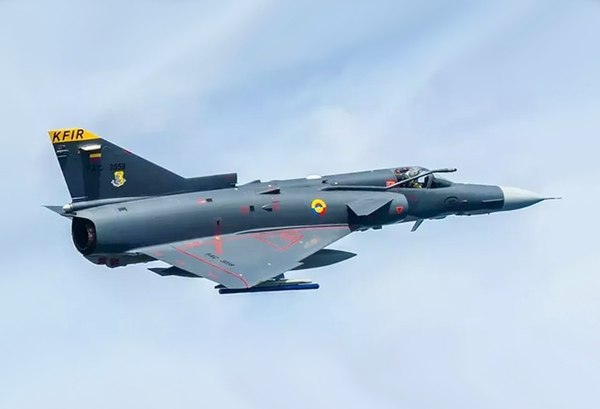
( Colombian Aerospace Force Kfir, from the 111th Combat Squadron)
As a result of a trade agreement between Colombia and Israel in 1989 the Colombian government bought a batch of 12 ex-IAF Kfir C.2s and one TC.2, which were delivered to the Colombian Air Force (FAC) in 1989–1990. Since then, all the C.2s have been upgraded to the C.7 variant. The FAC Kfirs have been widely used in ground-attack missions during counter-insurgency operations against Colombian terrorists. As of 2004 two aircraft had been lost in accidents.
In February 2008, Colombia signed a deal with the Israeli government for an additional 24 ex-IAF Kfir aircraft. It was estimated that these aircraft will most probably be upgraded by Israel Aerospace Industries (IAI) to C.10 standard.[8][9]
In June 2009, IAI delivered the first batch of upgraded Kfirs to the Colombian Air Force in a ceremony held at IAI's facilities in Israel. In attendance at the ceremony was Juan Hurtado Cano, the Colombian Ambassador to Israel, high-ranking officers from the Colombian Air Force, and executives from the International Defense Cooperation Directorate of the Israeli Ministry of Defense (IMOD-SIBAT). This was a part of a multi-year contract awarded in late 2007 and worth over $150 million to upgrade the existing Colombian Air Force Kfirs, and to supply additional jets. The additional Kfir jets, models C.10-C.12, have been upgraded and improved to include IAI's latest technologies and products.[10]
On July 20, 2009, a Kfir crashed near the city of Cartagena. The Israeli pilots operating the plane were unharmed in the incident, but the jet was destroyed. Israel Aerospace Industries said in a statement that the plane was flying a refresher flight, and that the aircraft didn't come to a stop on the landing strip, landing outside it. The director of the Israel Aerospace Industries announced that an investigation into the incident had already begun and that a panel to probe the crash had been appointed.[11][12] On July 22, 2009, IAI informed the Colombian Air Force that the accident was caused by an unspecified human error. As a result, IAI will replace the unit lost with another one and it will resume delivery to the Colombian Air Force.[13]
On November 1, 2013, two Colombian Air Force IAI Kfirs intercepted Russian Air Force Tu-160s that had entered Colombian airspace. The Russian aircraft had taken off from Simón Bolívar International Airport Venezuela.[14][15][16][17]
On October 10, 2017, Colombian IAI Kfirs were updated with the EL/M 2052 AESA Radar and incorporated the I-Derby-ER Active Air to Air Missile and the Python-5 Air to Air Infrared Missile[18][19]
As of 2019, 23 Colombian IAI Kfirs remain in service
(They are still some in service today I saw one 3 months ago)
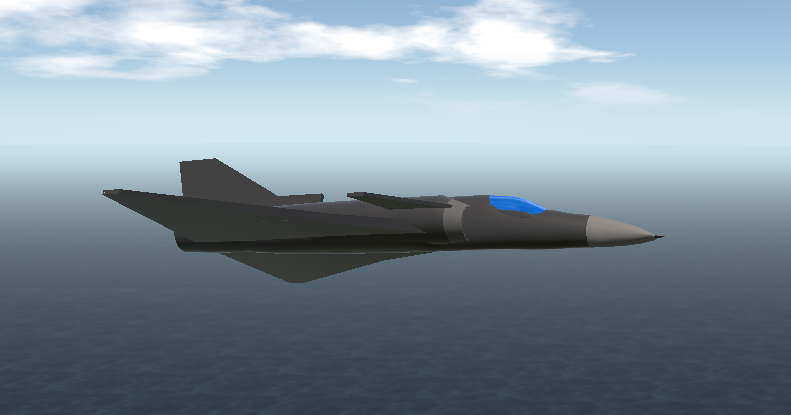
my point of view:
It's a pretty epic plane , but is very very noisy and it has not the best fuel economy during flights but I still like this plane, is one of my favorite fighter aircraft I have saw in person
Specifications
Spotlights
- TheNewSPplayer one year ago
General Characteristics
- Created On Android
- Wingspan 22.1ft (6.7m)
- Length 40.5ft (12.4m)
- Height 11.1ft (3.4m)
- Empty Weight 15,351lbs (6,963kg)
- Loaded Weight 20,393lbs (9,250kg)
Performance
- Power/Weight Ratio 1.763
- Wing Loading 11.7lbs/ft2 (57.3kg/m2)
- Wing Area 1,738.0ft2 (161.5m2)
- Drag Points 686
Parts
- Number of Parts 93
- Control Surfaces 13
- Performance Cost 432


